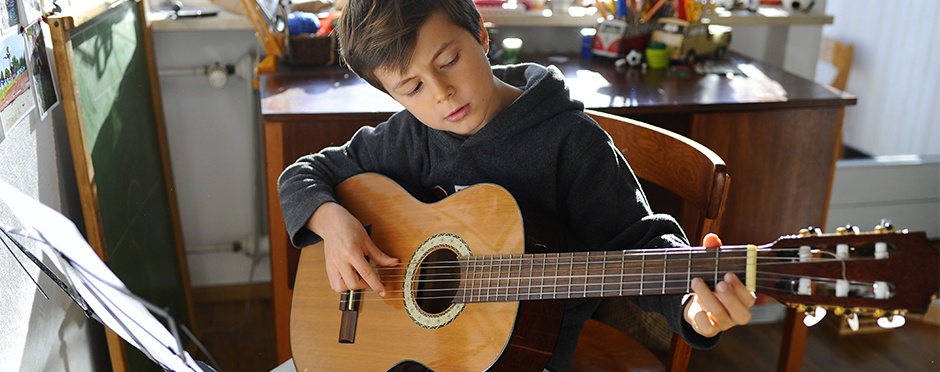
Injury Prevention Tips for Musical Athletes
Leave a CommentBy Shelia M. Tenny, OTR/L, CHT and Maggie Nowicki, MSOT/S
Pain and injuries experienced by instrumental musicians are just as varied as music itself! Common conditions include tendinitis, nerve entrapment and bursitis, to name a few.
Tips for Pain-Free Playing
1. Proper Set Up is Key
Playing an instrument is not a natural position for a body, but we can help adjust the relationship of the instrument to the body to make it as ergonomic as possible. Ergonomic set up to minimize strain on the neck, back and arms can go a long way in terms of preventing pain down the road.
These adjustments can include:
– Adding or adjusting straps for clarinets, bassoons and saxophones
– Adjusting end pin height for cellos and double basses
– Adjusting or changing shoulder and chin rests of violins and violas
It is also important to ensure that young musicians have consulted with a music teacher or professional for proper sizing of their instrument, as many instruments come in fractional sizes for smaller individuals.
2. Warming Up, Both Away From and On the Instrument
To prepare the body for a musical work out, instrumentalists should stretch their bodies just like athletes warm up before a game. Musicians are both large and small muscle athletes, so paying attention to small hand muscles is key! In addition to stretching large muscle groups in the arms, back and neck, musicians can benefit from hand and wrist stretches such as tendon gliding and stretching individual fingers and joints. However, if the musician is hyper-mobile, care should be taken not to overstretch these joints to prevent increasing instability. Warming up on the instrument should be relaxed and slow, such as scales and long tones. Save the fast technical work for later in the practice session!
3. Take Practice Breaks and Pace Practice Length
Multiple studies have shown that playing for long, uninterrupted lengths and sudden increases in practice, such as attending music festivals or preparing for auditions, are correlated to an increase risk of developing playing-related injuries.1 To avoid these issues, take 10 minute breaks for every 45-50 minutes of practice. Both the body and mind will benefit from these breaks, and can even make practice sessions more productive! In terms of preparation for an increase of practice time, try to gradually add time to the current practice routine. This will help prepare the body to meet the demands of a more intense practice routine.
4. Take Care of Your Body
Playing an instrument becomes impossible if the body breaks down! Basic self-care, including a consistent sleep schedule, balanced diet and regular physical activity helps ensure that the body and mind are well-prepared to perform intricate activities at a high level.
Seek Treatment When Necessary
The aforementioned tips will help you minimize the risk of injury, but it is still important for you to pay attention to your body. Should you experience any unusual aches and pain, schedule a free assessment at an Athletico near you. Our experts will take a look at your condition and provide recommendations for treatment so you can get back to doing the things you love to do – like playing music!
Free assessments are available both in-clinic and virtually through our telehealth platform.
The Athletico blog is an educational resource written by Athletico employees. Athletico bloggers are licensed professionals who abide by the code of ethics outlined by their respective professional associations. The content published in blog posts represents the opinion of the individual author based on their expertise and experience. The content provided in this blog is for informational purposes only, does not constitute medical advice and should not be relied on for making personal health decisions.
References:
1. Bird, H. A. (2013). Overuse syndrome in musicians. Clinical Rheumatology, 32(4), 475–479. doi: 10.1007/s10067-013-2198-2
2. Chan, C., & Ackermann, B. (2014). Evidence-informed physical therapy management of performance-related musculoskeletal disorders in musicians. Frontiers in Psychology, 5. doi: 10.3389/fpsyg.2014.00706
3. Lukomski, L., (2004). Common Injuries of Musicians. (Honors Thesis). Western Michigan University. Kalamazoo, Michigan.
